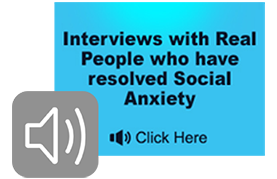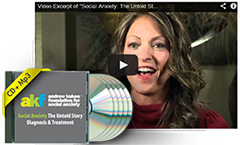GREAT NECK, NEW YORK
The pressure to socialize between Thanksgiving and The New Year is great. While many party, millions afflicted with social anxiety suffer in silence. The thought of social conversation, speaking in public, eating in public, and being noticeably nervous can create overwhelming discomfort, which can lead to panic attacks, depression, substance dependence, and social avoidance.
According to the ICD 10 “social anxiety is a disorder characterized by an intense, irrational fear of one or more social or performance situations in which the individual believes that he or she will be scrutinized by others. Exposure to social situations immediately provokes an anxiety response.
Social anxiety is the anxiety disorder of the millennium because it is based on performance.“ The disorder occurs in 6.8 percent of Americans, and within that 6.8 percent, almost 30 percent of cases are considered severe. Avoidant personality disorder, which is a major component of social anxiety disorder, occurs in an estimated 5.2 percent of the U.S. population annually. Add in other related diagnostic categories like selective mutism (a compulsive inability to speak in specific situations), erythrophobia (blushing anxiety), hyperhidrosis (excessive sweating), and public speaking anxiety and the statistics of those affected explode.
While many are affected, few seek treatment. This is because social anxiety is the classic disease of resistance. The emotions of shame, humiliation, and embarrassment have become so painful and toxic that avoidance rules. In essence, the sufferer has experienced the trauma of embarrassment and shame. A result of this trauma is the difficulty in separating performance from personhood, which is a core cause of social anxiety. Rather than experience the uncomfortable emotions, the sufferer learns to avoid the scenarios that stimulate them. The more avoidance is present, the more a phobia is present. In addition, the sufferer learns, as a defense mechanism, to detach or disconnect from thoughts and feelings. According to Berent and many others in the healing professions, this suppression of emotion is the direct cause of the physical symptoms the sufferer abhors. This is the reason relevant emotional content needs to be brought to a conscious level so that it can be therapeutically processed.
Having treated thousands of individuals of all ages with social anxiety since 1978, Berent has concluded that “while cognition and behavior certainly need to be re-architected as a component of treatment success, emotional and physiological variables need to be integrated into the treatment methodology. Anything less is trivializing the ingrained nature of the problem and will usually reach the point of diminishing returns regarding treatment efficacy. The challenge is that the mental health profession needs to be more educated to this reality.”
Berent offers a free social-ability profile here.
A free clinical library with rare interviews with individuals and families who have achieved life-changing results with The Berent Method is available.
Jonathan Berent, L.C.S.W. has pioneered treatment for social anxiety since 1978. He is the author of Beyond Shyness: How to Conquer Social Anxieties (Simon & Schuster),Work Makes Me Nervous (Wiley), and “Social Anxiety: The Untold Story (AKFSA)”. His website, www.socialanxiety.com has had more than three million visitors.
His website, http://www.socialanxiety.com, has had more than three million visitors.
Contact: Jonathan Berent, LCSW, ACSW
Telephone: (800) 248-2034
Email: jberent@socialanxiety.com
Website: http://www.socialanxiety.com




